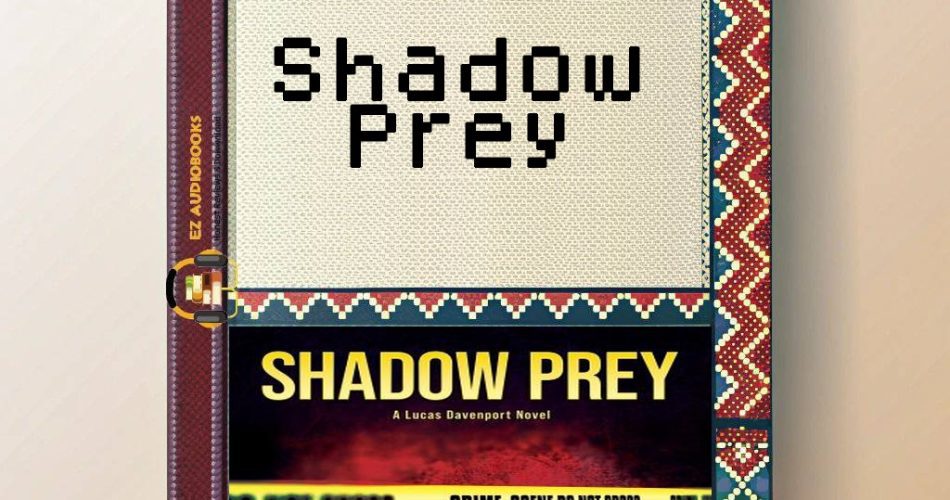Audiobook Sample
Listen to the sample to experience the story.
Please wait while we verify your browser...
- Title: Shadow Prey
- Author: John Sandford
- Narrator: Richard Ferrone
- Length: 12:11:00
- Version: Abridged
- Release Date: 22/06/2012
- Publisher: Recorded Books
- Genre: Mystery, Thriller & Horror, Suspense
- ISBN13: 9.78E+12
The first growling notes of Richard Ferrone’s narration in “Shadow Prey” transported me back to a moonlit night in Santa Fe, where I once sat around a campfire with a Navajo storyteller. There was that same raw authenticity in Ferrone’s delivery – a voice that carries the weight of lived experience, perfect for John Sandford’s gritty Minneapolis underworld. This audiobook doesn’t just tell a story; it pulls you into the smoke-filled rooms and snow-packed streets where Lucas Davenport hunts his prey.
Sandford’s second Davenport novel unfolds like a winter storm moving across the plains – deceptively calm at first, then relentless in its intensity. The plot, involving Native American activists targeting prejudiced officials, carries disturbing echoes of contemporary headlines. I found myself pausing the narration more than once during my morning commute, staring at the frozen Chicago River outside my train window, struck by how little has changed since this was written in 1990.
Ferrone’s performance is a masterclass in noir narration. His Davenport has the world-weary cadence of a cop who’s seen too much, yet still cares too deeply. When he voices Lily Rothenburg, the New York detective who partners with Davenport, he doesn’t resort to caricature – just subtle shifts in rhythm and tone that make their exchanges crackle with tension. The way Ferrone handles the Native American characters avoids the pitfalls of cultural appropriation that plague lesser narrators; there’s respect in his restraint.
The audiobook’s greatest strength lies in how Sandford and Ferrone together create what I can only describe as ‘textural suspense.’ You can almost feel the wool of Davenport’s coat collar against your neck, hear the squeak of fresh snow underfoot, taste the stale coffee in interrogation rooms. During a particularly tense stakeout scene, I realized I’d been holding my breath along with the characters – a testament to Ferrone’s impeccable pacing.
Yet “Shadow Prey” isn’t without its flaws. Some of the cultural representations feel dated now, and Sandford’s female characters occasionally veer toward archetype rather than full humanity. Ferrone’s narration, while superb overall, sometimes rushes through transitional moments that could benefit from more breathing room. There’s one scene where Davenport reflects on his mixed heritage that I rewound three times, wishing Ferrone had lingered on those vulnerable beats.
Compared to contemporary police procedurals, “Shadow Prey” stands out for its unflinching examination of systemic injustice. While the plot shares DNA with Michael Connelly’s Harry Bosch series or Ian Rankin’s Rebus novels, Sandford’s Minneapolis feels uniquely oppressive in its winter bleakness. The audiobook version enhances this atmosphere – Ferrone’s voice becomes almost a character itself, like the grizzled bartender in some noir film who’s seen it all.
For listeners new to Sandford, this might not be the ideal starting point (that honor goes to “Rules of Prey”), but it’s essential for understanding Davenport’s complex morality. The scenes where he wrestles with the righteousness of the killers’ cause against the horror of their methods are some of Ferrone’s finest work. I found myself parking my car extra slowly just to hear another minute of their philosophical sparring.
What surprised me most was how the audiobook made me reconsider my own travels through Native American communities. I remembered a protest I’d witnessed near Standing Rock, the way the steam from coffee cups had mingled with winter breath in the morning air. Sandford’s fiction, filtered through Ferrone’s gravelly delivery, has that rare power to refract our own experiences through its dark lens.
The technical quality holds up well, though the recording shows its age in quieter passages. There’s a particular sequence in Chapter 14 where the audio subtly shifts – likely from original tape sources – that briefly took me out of the story. But these are minor quibbles in what remains a benchmark for crime audiobooks.
Until our next literary adventure, keep listening deeply – Marcus
Marcus Rivera

